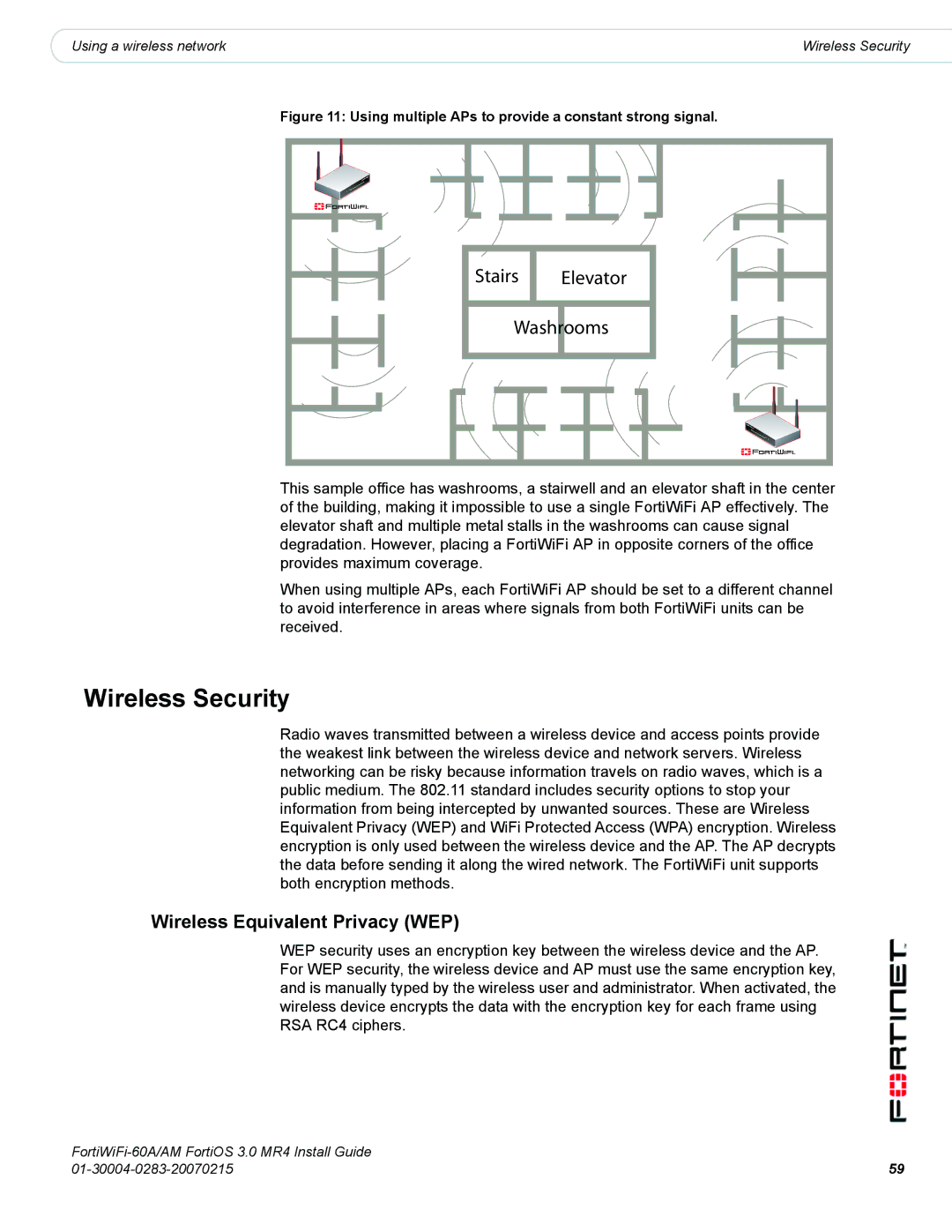
|
|
Using a wireless network | Wireless Security |
Figure 11: Using multiple APs to provide a constant strong signal.
Stairs | Elevator |
Washrooms | |
This sample office has washrooms, a stairwell and an elevator shaft in the center of the building, making it impossible to use a single FortiWiFi AP effectively. The elevator shaft and multiple metal stalls in the washrooms can cause signal degradation. However, placing a FortiWiFi AP in opposite corners of the office provides maximum coverage.
When using multiple APs, each FortiWiFi AP should be set to a different channel to avoid interference in areas where signals from both FortiWiFi units can be received.
Wireless Security
Radio waves transmitted between a wireless device and access points provide the weakest link between the wireless device and network servers. Wireless networking can be risky because information travels on radio waves, which is a public medium. The 802.11 standard includes security options to stop your information from being intercepted by unwanted sources. These are Wireless Equivalent Privacy (WEP) and WiFi Protected Access (WPA) encryption. Wireless encryption is only used between the wireless device and the AP. The AP decrypts the data before sending it along the wired network. The FortiWiFi unit supports both encryption methods.
Wireless Equivalent Privacy (WEP)
WEP security uses an encryption key between the wireless device and the AP. For WEP security, the wireless device and AP must use the same encryption key, and is manually typed by the wireless user and administrator. When activated, the wireless device encrypts the data with the encryption key for each frame using RSA RC4 ciphers.
59 | |
